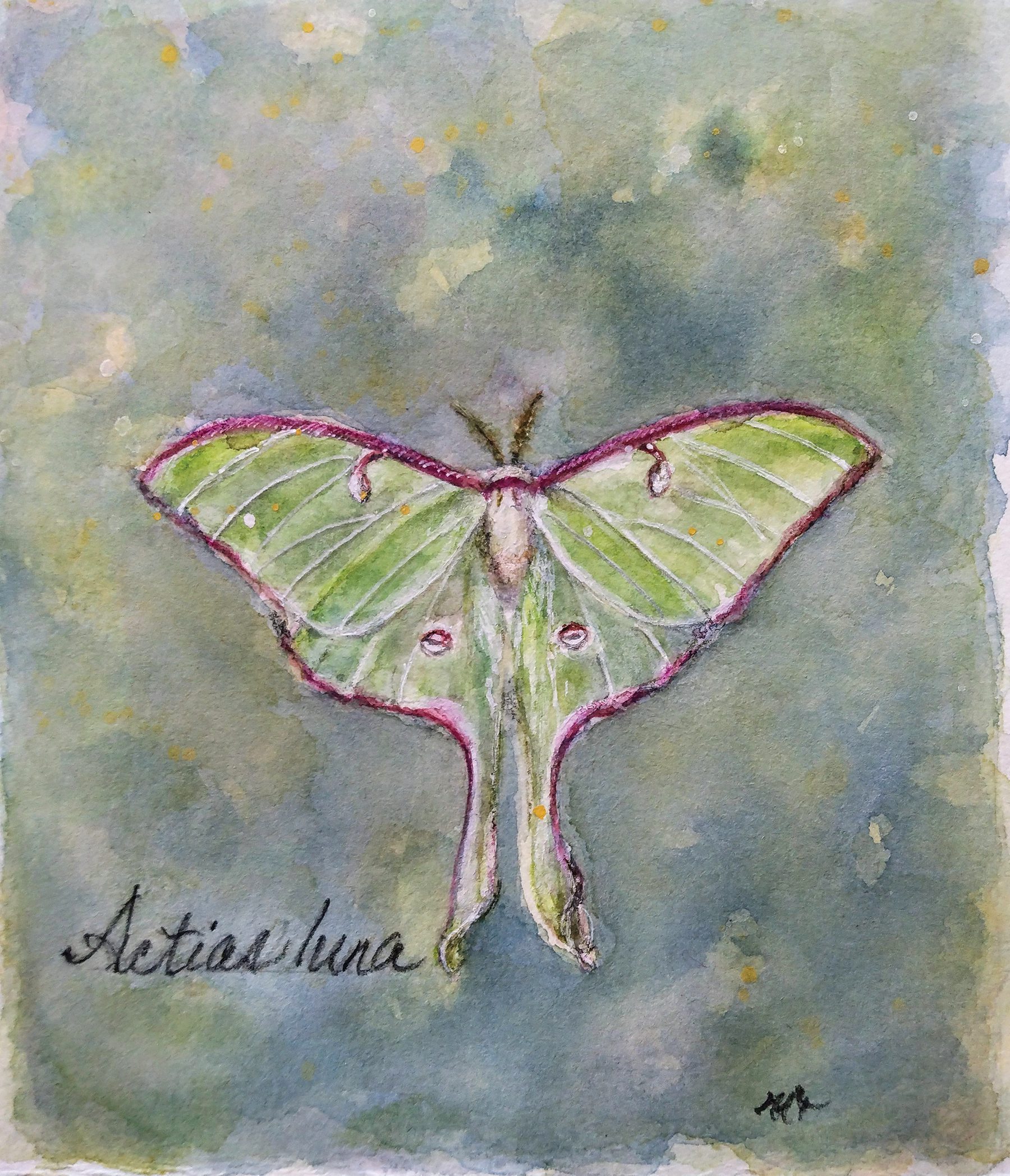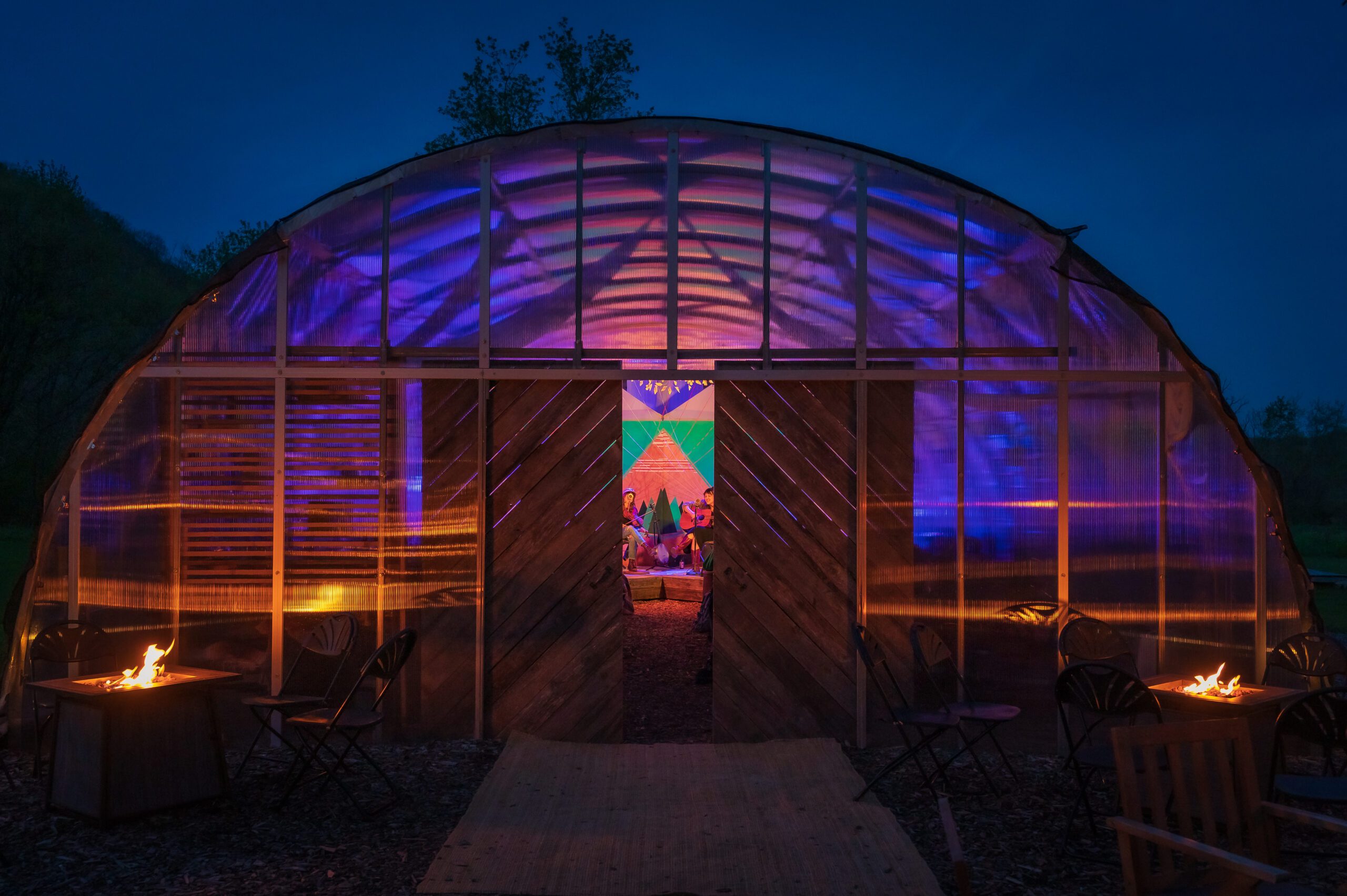Moths: Dancing in the Dark
As the sun covers itself with a starry blanket, a fluttering frenzy unfolds. Evening aviators emerge to navigate sweet-scented currents drifting through your yard. Mere molecules of fragrance send them reeling in the shadows. You see, for moths, life is all about odors.
Moths have been wind-scenting forests and wetlands since the dawn of flowering plants. Fossil fragments bearing evidence of “early” moths date back to the Jurassic Period, about 200 million years ago. Did T-rex have moths in its sock drawer? Since the reign of dinosaurs, the ancestral moth has radiated into nearly 160,000 species worldwide, including a staggering variety of shapes and colors.
While our nocturnal friends are typically stigmatized as washed out white, gray, and brown – as dull in coloring as an old sweater – members of the silk moth family take the prize for dazzling. The rosy maple moth, a Driftless denizen, looks like fruity sherbet, bedecked in alternating bands of banana yellow and cotton candy pink. The closely related luna moth is an emerald stunner. The luna is so beautiful, it has the distinction of being the only moth featured on a United States postage stamp, an honor conferred to more than two dozen of its day-flying cousins, the butterflies. Adult luna moths are adorned with large, lime green wings with a maroon trim package. Long tails on hind wings conjure regal images. While beautiful, those trailing tails serve to confuse hungry bats, reducing the moth’s likelihood of ending up a snack.

Yet despite their best efforts at evasion, their sheer abundance makes them a wildlife food staple. Thus, moths play critical roles in nature. For countless baby birds, moth caterpillars are “what’s for dinner.” Adult sphinx moths are preferred prey for night flying Whip-poor-wills. Bats and Common Nighthawks, large, swallow-like birds active during twilight (a crepuscular lifestyle), also eat flying insects, including an abundance of somber-toned moths.
There’s more to moths than landing on the proverbial menu, though. After bees, beetles, and butterflies punch out for the day, moths begin the nightshift to continue the important work of pollination. Their keen sense of smell enables them to find flowers that chemically shout “pick me” by emitting pungent nocturnal scents. Moths navigate the botanical potpourri with antennae specially designed to detect the slightest whiff of flowers. Because they have a metaphorical sweet tooth, it’s possible to attract them for observation by using a fermented concoction of brown sugar and bananas. Mix the ingredients, let the sweet slurry ripen for a couple days, apply it to tree bark with a brush and stand back to watch the late-night extravaganza. Approaching slowly with a flashlight will allow you to illuminate our night-flying neighbors for a better look.
Driftless prairies and woodlands provide essential habitat for more than 1,000 species of moths. Your yard has a role to play, too. Even a small native plant garden can support dozens of moth species. Don’t be too fastidious. Dead leaves and old plant stems provide important cover for caterpillars, cocoons, and adults. Eliminating pesticide use will make your yard moth friendly. When possible, turn off outside lights so moths don’t flutter themselves to illuminated exhaustion.
This summer, as the full moon rises and stars begin twinkling their ancient morse code, head out and settle in for a glimpse of garden night life. You’ll witness one of earth’s oldest spectacles, an eclipse – the term for a group of moths – of lovely night-flyers, dancing in the dark.














